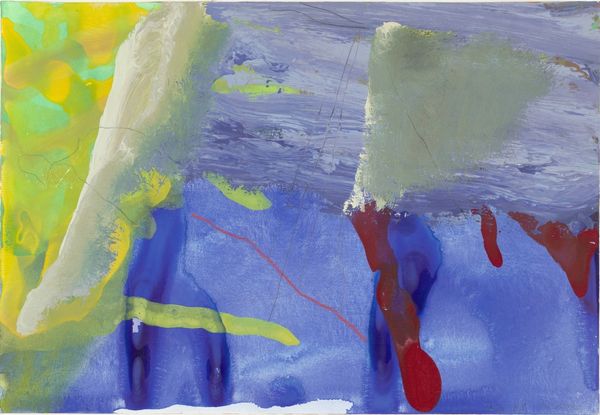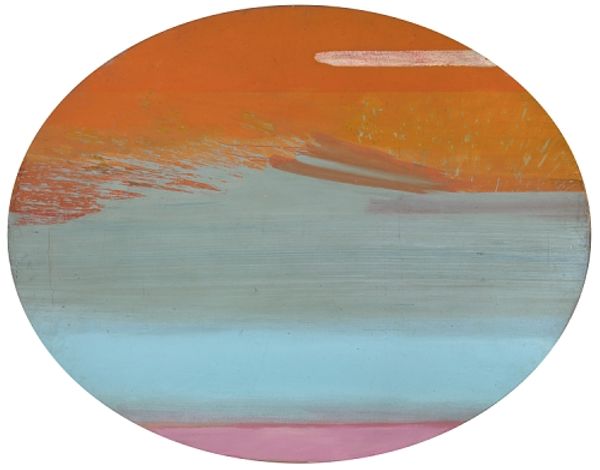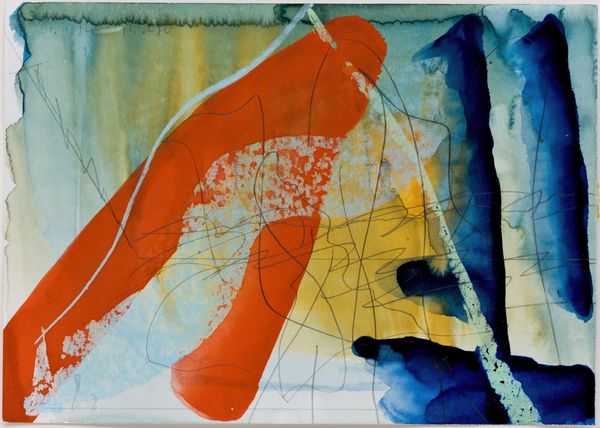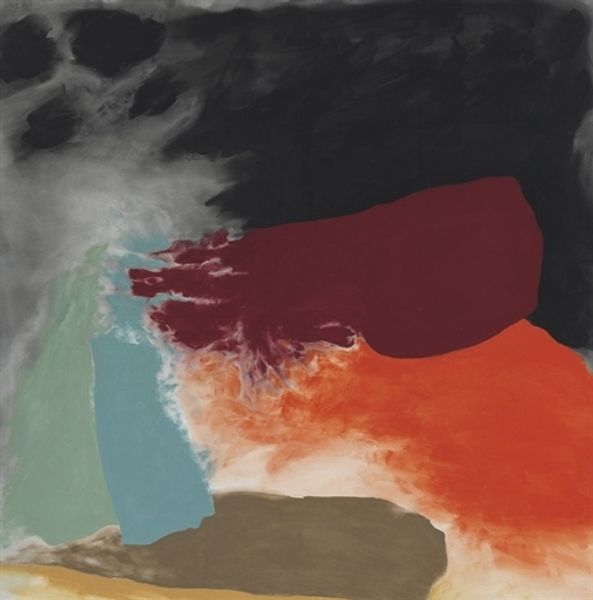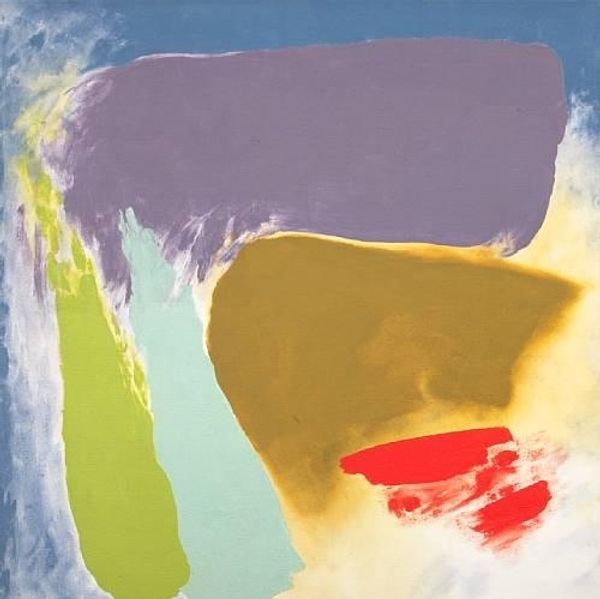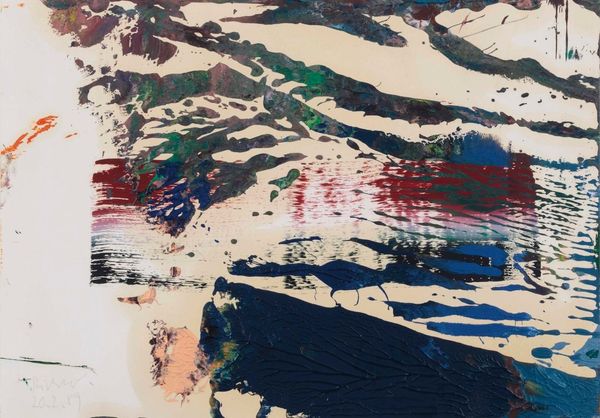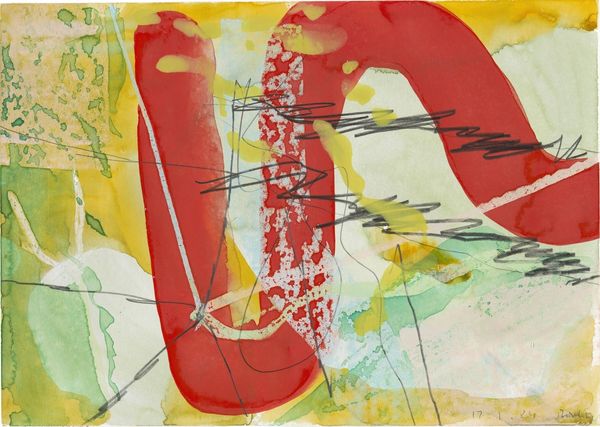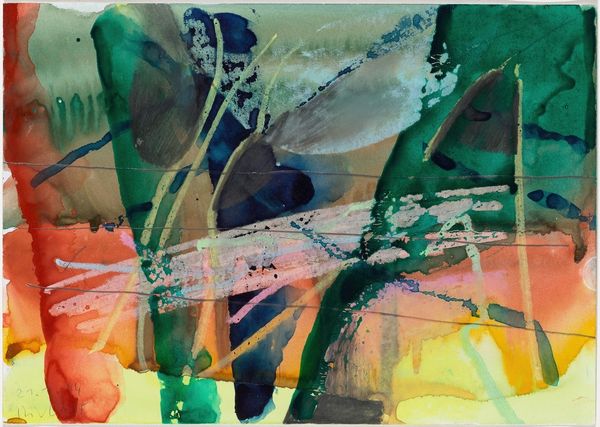
acrylic-paint
#
abstract-expressionism
#
colour-field-painting
#
acrylic-paint
#
neo expressionist
#
acrylic on canvas
#
abstraction
Copyright: Friedel Dzubas,Fair Use
Curator: Right, let's discuss Friedel Dzubas’s “Sanctum,” an intriguing, unsigned work rendered in acrylic paint and emblematic of colour field painting. It has a quiet monumentality, wouldn't you agree? Editor: Monumentality, perhaps, but muted. My initial reaction is a feeling of gentle restraint, a calming almost melancholic effect due to its subdued hues and blurred edges. It feels quite contemplative. Curator: Absolutely. Dzubas's application of acrylic here allows for a certain layering and blending which enhances the subtle gradations of color. It’s a stark contrast to some of his contemporaries; we're looking at a sophisticated manipulation of material rather than a simple splash of paint. The making of this work involved careful control, a considered labor. Editor: It's interesting to consider its place within the trajectory of color field painting and abstract expressionism more broadly. Given its emphasis on abstraction and emotional resonance, "Sanctum," does the museum adequately contextualize its influence within prevailing social and artistic trends when engaging audiences? The use of the term "sanctum" for this visual form—what socio-political contexts allowed for this conceptual pairing of space and emotion? Curator: It certainly raises those questions, doesn't it? One can see an immediate lineage with the large-scale canvases of artists like Rothko, whose work likewise prompts the viewer to find a private space of reflection, what you rightly describe as emotional space, even as it challenges more conventional understandings of pictorial depth and representation. We also have to remember how galleries influenced which works got spotlighted from his output. Editor: I am still struck by the colors: dusky blues and soft yellows interacting with mauve sections of blended purple, it evokes, to me, a sort of interior landscape, with maybe hints of landscape paintings and seascapes – something almost elemental at play. Curator: Yes, the earth tones are significant and do a fine job of highlighting the materiality. Seeing the weave of the canvas still visible adds layers of interest when you consider how artworks were transported from studio to the exhibit. Editor: Agreed. It also provides valuable access to his world. Curator: Well, this conversation has shifted my view, emphasizing new points for me. Editor: As it has done for me too. It’s the constant negotiation that keeps art history alive!
Comments
No comments
Be the first to comment and join the conversation on the ultimate creative platform.
